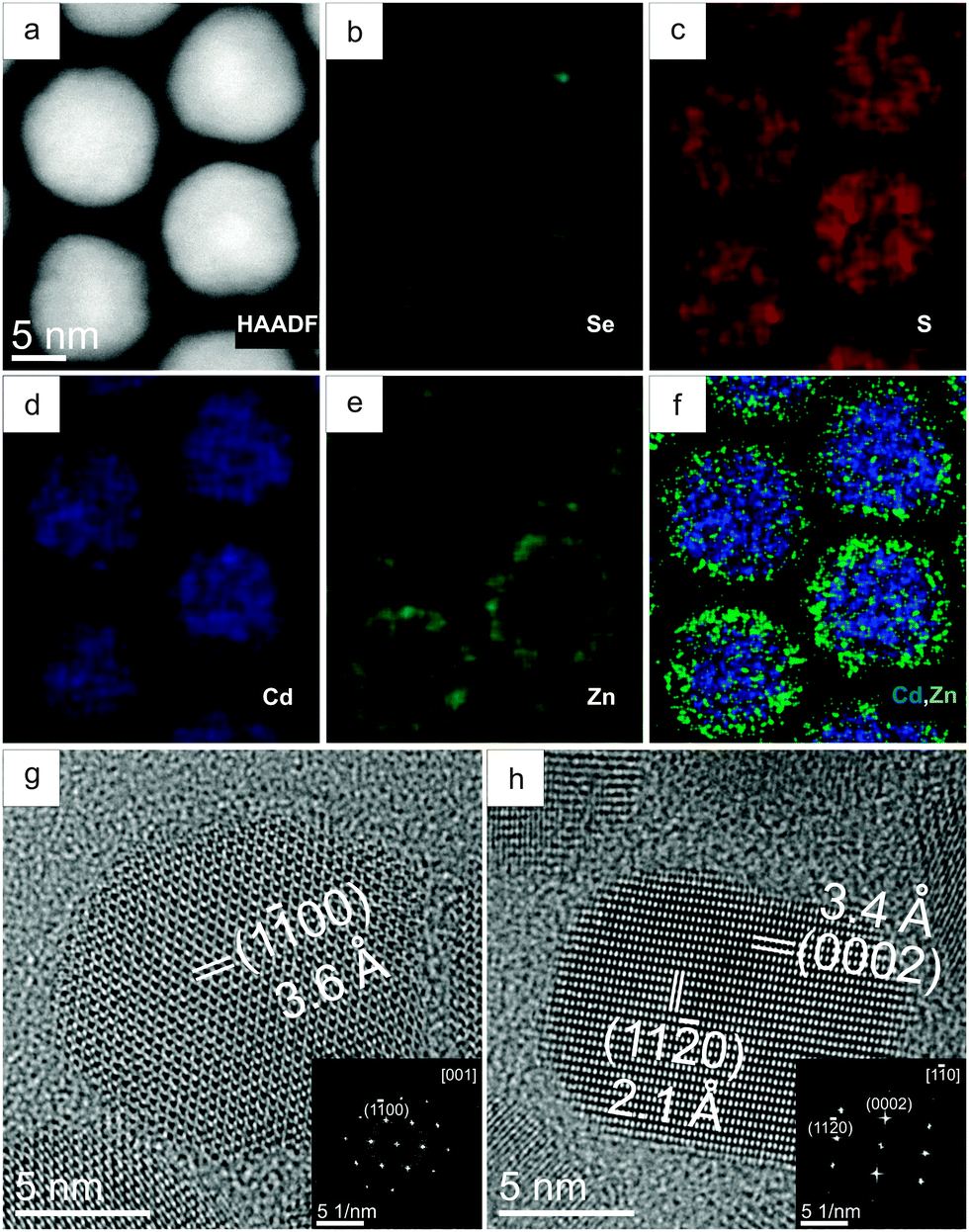
Up to now, none of these QDs were used to form thick-shell green-emitting QDs.

The conventional routes for synthesis of green-emitting QDs were basically relying on expensive reagents, such as 1-tetradecylphosphonic acid (TDPA), which form strong binding constant with cadmium ions resulting in a slow formation of QDs, and a subsequent small size of the resulting nanoobjects with a homogeneous size dispersions 3, 20.

However, it still remains challenging to obtain efficient saturated green-emitting ranging from 520 nm to 540 nm for CdSe based TSQDs due to the following two main factors: (i) the large surface-to-volume ratio (S/V) which increases as the size decreases proportionally to 3/r, so that QDs are more sensitive to their environment and their PL intensity is easier to quench owing to more surface trap states 17 (ii) it is not only difficult to fabricate such small CdSe semiconductor NCs with high QY and uniform size distribution, but also to achieve high stability by coating an inorganic semiconductor shell with wider-band-gap 18, 19. In this way therefore, QDs with pure color emission of FWHM less than 30 nm can be obtained, accordingly achieving QD-based display devices with a promising color gamut 13.Īccording to previous literature data, CdSe QDs with thick CdS shells exhibit reliable photoluminescence (PL) properties for saturated red emitting from 630 nm to 650 nm, with QY up to 97%, and FWHM of approximately 30 nm 1, 6, 14, 15, 16. To realize these targets, thick-shell QDs (TSQDs) were usually synthesized by epitaxial growth of inorganic shells on the cores with a consequent removal of the surface defects states 12.

#Cdse zns core shell quantum dots full
In these applications, it is a prerequisite to improve their chemical stability and photoluminescence (PL) quantum yield (QY) without changing their characters of facile tunable emission and narrow full width at half maximum (FWHM). Semiconductor quantum dots (QDs), thanks to their tunable emission property, have been broadly applied in light emitting diodes (LEDs) displays 1, 2, 3, 4, 5, solar cells 6, 7, 8 and biomedical applications 9, 10, 11, etc.


 0 kommentar(er)
0 kommentar(er)
